Linux supercomputer firm snags $10M funding
Aug 3, 2007 — by LinuxDevices Staff — from the LinuxDevices Archive — views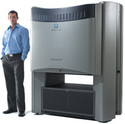 SiCortex, claiming to be the first company to engineer a Linux cluster from the silicon up, has secured $10 million in venture capital. The funds have arrived as the company “launches its super energy efficient high performance Linux cluster computers,” SiCortex said.
SiCortex, claiming to be the first company to engineer a Linux cluster from the silicon up, has secured $10 million in venture capital. The funds have arrived as the company “launches its super energy efficient high performance Linux cluster computers,” SiCortex said.
(Click for larger view of the SiCortex SC5832 supercomputer)
digg this story |
The benefactor for this round is Hercules Technology Growth Capital. SiCortex says the money will “accelerate production and sales and marketing efforts in response to demand for its products.” The investment brings to $52 million the amount raised since the company was formed in 2003.
SiCortex is currently shipping two Linux-based HPC (high performance computing) supercomputers: the SC5832 (shown above), and the smaller SC648 (shown below).
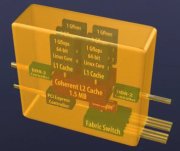 SiCortex's MIPS SoC (Click to enlarge) |
Silicon supercomputer building blocks
SiCortex's supercomputers are built from its own silicon building blocks — SoCs (system-on-chip processors) known as “SiCortex Nodes.” Each SoC contains six 1-gigaflop (500 MHz) MIPS64 RISC-architecture cores, L1 and L2 caches, two interleaved memory controllers (one for each DIMM), the interconnect fabric's links and switch, a DMA Engine, and PCI Express interface for external I/O devices (enabled only on some nodes). The company claims that each of the MIPS cores draws a mere 600 milliwatts of power, leading to its motto: “teraflops from milliWatts.”
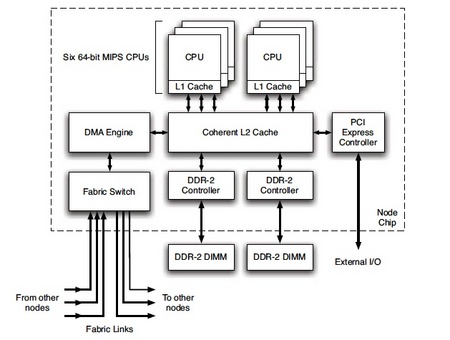
SiCortex SoC architecture
(Click to enlarge)
The cores run a relatively current distribution of Gentoo Linux, which has long supported MIPS RISC architecture-based cores. “Gentoo allows flexibility and stays up with the latest kernel,” John Goodhue, SiCortex vice president of marketing told LinuxDevices. “It also gives end users who want it direct access to the operating system.” Director of Engineering Win Treese added that Gentoo's support for MIPS and precompiled binaries were keys to its selection.
According to the company, 27 six-core Nodes are combined onto computing blades, which in turn are used to construct the supercomputing systems.
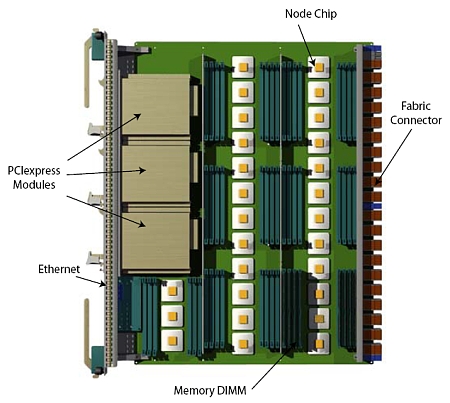
SiCortex's 27-Node (162 core) computing blade
One Linux kernel runs on each six-core Node, in SMP (symmetric multiprocessing) mode. The Nodes themselves have no boot ROM; instead, their OS images are loaded via “JTAG-compatible scan chains” by a uClinux-based microprocessor that resides on each 27-Node blade.
The SC5832 is built from 36 such boards, and thus contains a total of 5,832 MIPS64 cores, for an aggregate claimed processing bandwidth of 5.8 Teraflops.
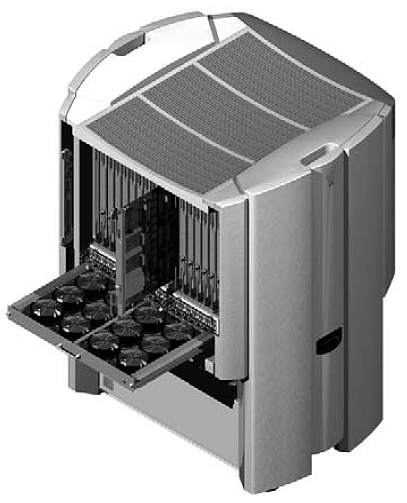
SC5832 — 5.8 Teraflops in a box
The resulting system, which is additionally equipped with 8TB of DDR-2 RAM, is described by the company as “the first and only computer system of the 21st century to pack Top500 performance onto a single backplane.” The SC5832 uses PCIe (PCI Express) for I/O, and consumes around 18 kilowatts of power, according to the company. It runs 972 instances of Gentoo, Goodhue said.
 SiCortex's SC648 (Click to enlarge) |
The SC648, pictured at right, is rated at more than half a teraflop of peak performance although it draws power from a standard 115V outlet. It contains 108 computer nodes and fits into a 19-inch rack, for an aggregate computing performance of 648 Gigaflops, according to the system. The system draws about 2KW of power, and, like the SC5832, runs Gentoo Linux.
Goodhue said both systems are available now. The SC648 starts at about $170,000 for a minimal configuration (price increases with memory). The most expensive SC5832 leaves the factory at about $2.7 million. Although the company is holding customer names close to the vest, Goodhue indicated that early customers come from virtually all supercomputing segments identified by IDC (International Data Corporation), “such as oil and gas, biotech, molecular dynamics, and the financial community looking to run Monte Carlo simulations.”
SiCortex also announced earlier this week that it had acquired the Pathscale Compiler business unit from QLogic Corp. The deal includes members of the Pathscale team as well as IP (intellectual property) and current business. Fred Chow, head of the PathScale tem at QLogic, is joining SiCortex as director of compiler engineering.
An interesting interactive “architecture tour” of SciCortex's hardware/software/operational environment may be accessed here.
This article was originally published on LinuxDevices.com and has been donated to the open source community by QuinStreet Inc. Please visit LinuxToday.com for up-to-date news and articles about Linux and open source.